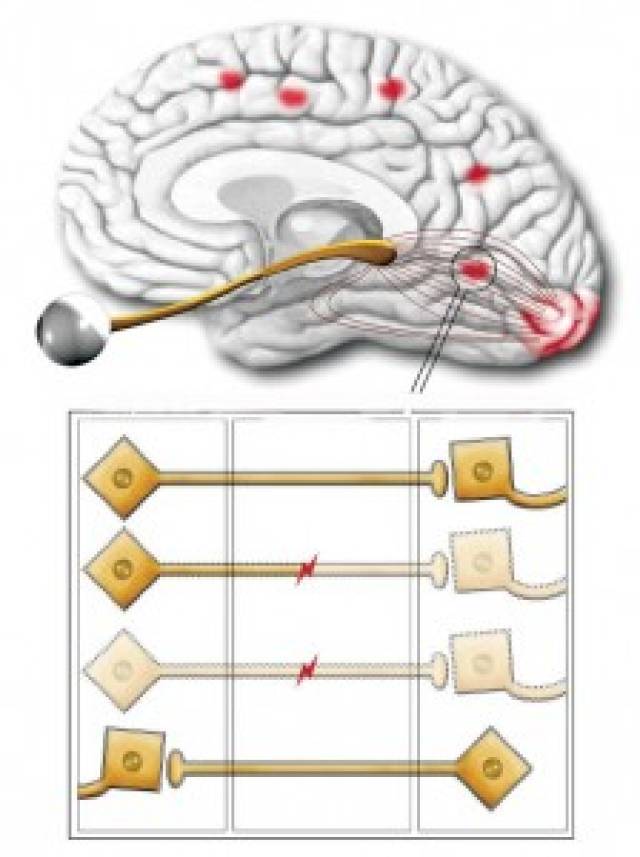Multiple sclerosis is a chronic inflammatory neurodegenerative disease of the central nervous system that affects the brain and spinal cord. It is the most common chronic neurologic disease in young people and adults in Europe and affects approximately 2.5 million people throughout the world. The study, published in the journal Archives of Neurology (66(2):173-9), was carried out by the team of Dr. Pablo Villoslada at the University of Navarre. Last December, these researchers joined Hospital Clínic, Barcelona-IDIBAPS. Until now, it was thought that the atrophy seen in the brains of patients with multiple sclerosis was caused by the plaque in the white matter. The new results show that these plaques explain only 30% of the lesions.
Until now it was assumed that multiple sclerosis predominantly affected myelin, a fat that sheaths the nerves. It was thought that the plaques that form in the myelin were directly responsible for the atrophy of the grey matter. This study was designed to determine whether the loss of volume–atrophy–in the brain’s structures was related to the presence of lesions or cuts in the nerves connected to them.

Thus, although the sclerotic plaques in the nerves contribute significantly to the atrophy of the grey matter, the remaining 72% must still be explained. The data suggest that other neurodegenerative processes are involved. Because atrophy of the grey matter is the main cause of the progressive form of the disease and its severe sequelae, it is important to gain a better understanding of the principal mechanism of the damage, apart from the classic plaques, in order to be able to apply this knowledge to treating the disease.

